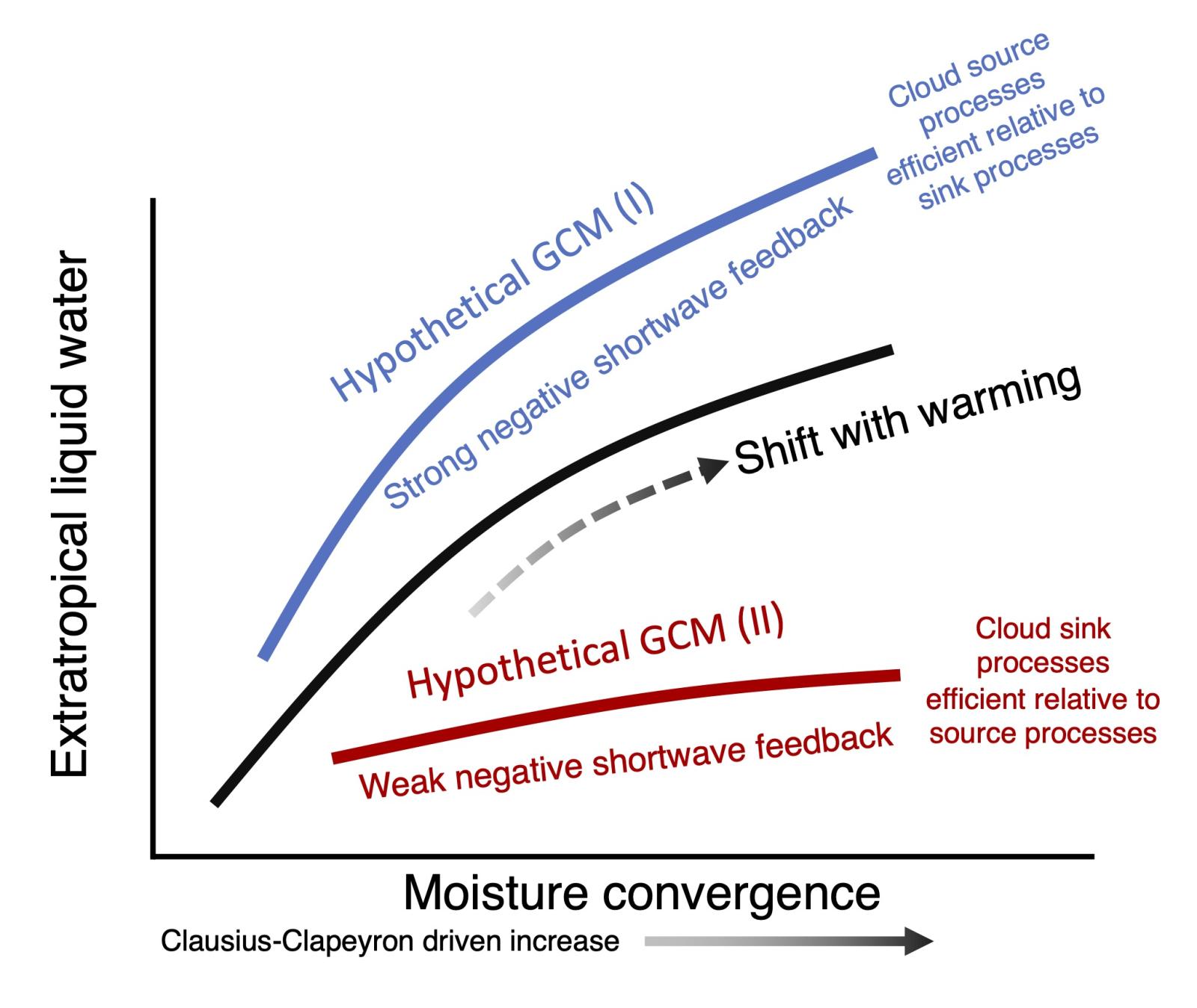Linking atmospheric rivers to cloud feedback through precipitation and radiative efficiency
Shortwave (SW) cloud feedback (SWFB) is the primary driver of uncertainty in the effective climate sensitivity (ECS) predicted by global climate models (GCMs). ECS for several GCMs participating in the sixth assessment report exceed 5K, above the fifth assessment report ‘likely’ maximum (4.5K) due to extratropical SWFB’s that are more positive than those simulated in the previous generation of GCMs. Here, we examine models from the fifth and sixth assessment reports (CMIP5 and CMIP6) as well as long-term observations of cloud properties. Stronger moisture transport by atmospheric rivers during the observational record explains increased Southern Ocean cloudiness in cyclones. Cyclone composited climate model output agrees in predicting increased cloudiness due to enhanced moisture convergence into the cyclone, but the degree to which increased moisture convergence increases cloud varies dramatically between models. We argue that this is a function of the precipitation efficiency representation in different GCMs. Clausius-Clapeyron drives increased moisture transport in GCM simulations of warming. Moisture convergence increase explains increased liquid water path in many GCMs, dependent on precipitation efficiency. Precipitation efficiency also plays an important (and opposing) role in setting mean-state cloud amount and radiative efficiency. Dependence on parameterization perturbations is discussed. Based on this framework, we provide an observational constraint for extratropical SWFB.

